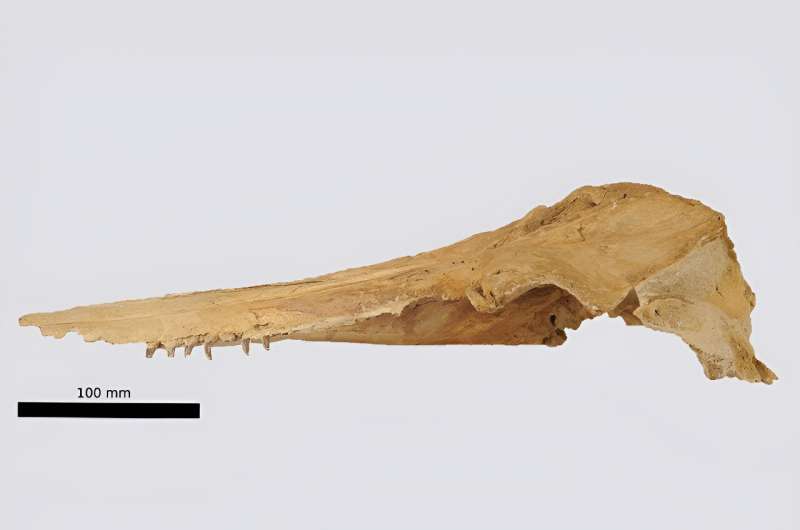Fossil Dolphin Uncovered: A New Species Identified

April 4, 2024
Science X's review process and policies were implemented to evaluate this article for credibility. These measures include the following checkpoints:
- fact-checked,
- sourced from a trusted,
- proofread
by the University of Otago
In an extraordinary finding, researchers from the University of Otago have correctly identified and christened a fossil dolphin possessing an uncommon feeding mechanism.
The Journal of the Royal Society of New Zealand contains a paper that has officially named the dolphin fossil as Aureia rerehua.
The leading scholar on this project, Shane Meekin, who owns a Master of Science degree from the Department of Geology, reflects on the dolphin fossil being uncovered several years prior and only recently being labelled following thorough examination by the scholars.
The Aureia was found in Hakataramea Valley's quarry and is currently on display at the Geology Museum of the University of Otago. It holds company with other prehistoric artifacts due to the endeavours of the late Emeritus Professor R. Ewan Fordyce, other colleagues and alumni.
Mr. Meekin explains that the inclusive, spread-out teeth of Aureia are believed to have hooked fish akin to a large net. This is considered distinct as other ancient dolphins residing in the same locale typically utilized their teeth to attack their prey.
Mr. Meekin notes that the Aureia developed a unique method for hunting, using its front teeth more delicately and differing from the common presumption of large front teeth being the primary tools for catching prey.
Despite its comparatively smaller physique combined with a feeble skull and flexible neck, Aureia was competent at hunting in shallow waters.
Its name derives from the Māori word 'aurei', translating to 'cloak pins' that are similar to its teeth; along with 'rerehua', connoting beauty, a suitable descriptor for this splendidly preserved specimen.
According to Meekin, these findings further the understanding that a small geographical area can encompass many fossil dolphins, exhibiting massive variations in form.
'This finding reinforces the theory that comparably similar animals can coexist if they select varying ecological niches,' says Meekin. 'It further points towards the fact that primitive prehistoric dolphins adopted several different feeding strategies to exploit various niches, which explains the vast variety of extinct dolphins recovered from fossil locations such as the Hakataramea valley.'
The site of Hakataramea is a component of the Waitaki Whitestone geopark, New Zealand's premier UNESCO geopark, which owes its creation to the abundant deposit of fossils in that area.
This research was facilitated by the University of Otago.




